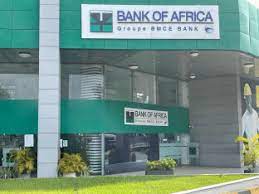Ratings agency, Fitch, has affirmed Bank of Africa's (BOA) Long-Term Foreign- and Local-Currency Issuer Default Ratings (IDRs) at 'BB' with Stable Outlooks.
Fitch also affirmed BOA's Viability Rating (VR) at 'bb-' and National Long-Term Rating at 'AA-(mar)' with a Stable Outlook.
According to Fitch, BOA's IDRs are driven by potential support from the Moroccan authorities, as reflected in the bank's Government Support Rating (GSR) of 'bb'.
The Stable Outlook mirrors that of the sovereign rating. BOA's VR considers its solid franchise in Morocco and its pan-African presence, which brings diversification benefits to the business model but also exposes it to less developed markets and more volatile operating conditions. BOA's stronger performance and fairly strong funding and liquidity are balanced by weak capital and asset quality.
Government Support Rating:
BOA's GSR of 'bb' considers the bank's systemic importance as the third-largest Moroccan bank - but also the limitations of the sovereign's financial flexibility.
Fitch therefore views BOA as a domestic systemically important bank (D-SIB) in Morocco based on its 14% market share of loans and deposits.
Moderate Risk Profile
Fitch said BOA’srisk profile has improved with a greater harmonisation in risk controls across the group, a cautious approach to growth in recent years in a drive to preserve capital, as well as several rounds of capital increases, including rights issues.
The bank's loan book is less concentrated than the peer average; the largest 20 exposures were 14.5% of total gross loans end-half-year 2023.
Asset-Quality Weaknesses
Fitch again said BOA's Stage 3 loans ratio (end-1H23: 9.9%) is higher than at other major Moroccan banks, which is partially driven by higher impairments at its African subsidiaries.
Stage 2 loans are high at 8.1% of gross loans, although roughly in line with the peer average of 9%. Reserve coverage of Stage 3 loans by total allowances (85%) is reasonable.
Healthy Profitability
Again,BOA's operating profit improved to 2.0% of risk-weighted assets (RWAs) in first-half of 2023 (2022: 1.6%) owing to strong fees and commissions income as well as net interest income, and is broadly in line with the sector average. BOA's cost efficiency has improved but remains weaker than peers' primarily due to its foreign operations. In 9M23, net income was up 17% year-o-year, primarily due to a solid 18% growth in net fees and commissions and 10% growth in net interest income
Latest Stories
-
EXPLAINED: Thermal output rises, but $2.5bn debt to IPPs and fuel suppliers mounts
8 seconds -
EGL announces “gargantuan” price reduction dubbed “Cedis Apicki” promotion
14 minutes -
Strict supervision is key to driving traders off the street – Market queen
17 minutes -
Coastlines in danger even if climate target met, scientists warn
1 hour -
Tanzania president warns ‘meddling’ Kenyan activists
1 hour -
Feasibility studies for new national capital underway — Mahama
1 hour -
National trials loom large as Ghana sprinters chase World Championships qualifying mark
2 hours -
Former Spain, Liverpool goalkeeper Reina announces retirement
2 hours -
Final lineup of teams confirmed for inaugural Betway Tumu Community Cup
2 hours -
Mahama Ayariga condemns “gruesome killing” of Bongo NHIA director
3 hours -
‘I’ve seen improvements’ – Zito reflects on first month in charge of Kotoko
3 hours -
Black Queens name squad for doubleheader against Cote d’Ivoire
3 hours -
I personally pushed for Board Chair appointment at SEC – Dr. Anane Antwi
3 hours -
Gov’t opens consultations to revise mining policy and Act 703
3 hours -
We will not sell any SSNIT asset – Director General assures
3 hours

